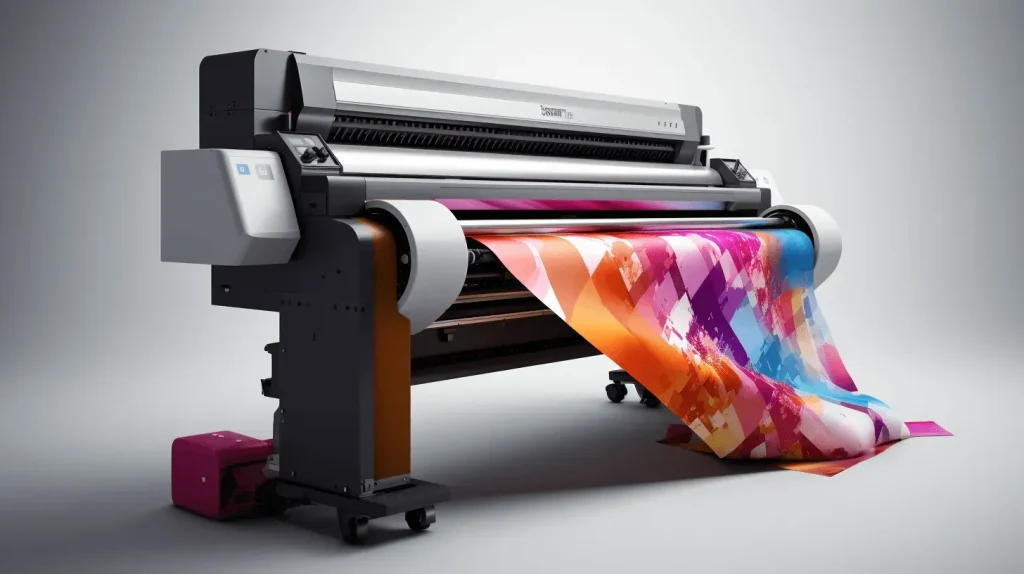DTF printing, or Direct-to-Film printing, has rapidly gained traction in the textile printing industry due to its capacity to deliver stunning prints with vibrant colors. As consumers and brands alike become more conscious of the environmental impact of printing, DTF printing presents a viable alternative, given its use of predominantly water-based inks that are often considered more eco-friendly. This printing method allows for sustainable printing practices by reducing waste, as it can accommodate smaller print runs without the need for extensive setup typical of screen printing. However, the conversation around DTF printing also includes an examination of its advantages and disadvantages, particularly in relation to textile printing sustainability. With a focus on innovation, many manufacturers are exploring ways to improve this process, such as developing eco-friendly inks that lessen the environmental impact, thereby making DTF printing a subject worth exploring for those seeking sustainable printing solutions.
Direct-to-Film printing, often referred to in the industry as film transfer printing, has emerged as a significant player in the world of modern textile graphics. Its innovative approach to producing high-definition prints provides a fresh alternative to traditional methods like screen printing and direct-to-garment printing. As the demand for eco-friendly production methods rises, exploring the sustainability of this printing technique has become crucial. Terms like textile print sustainability and sustainable printing practices have become part of the conversation, as companies evaluate the environmental implications of their chosen methods. Understanding both the pros and cons of DTF printing not only aligns with eco-conscious efforts but also encourages the adoption of greener practices in the industry.
Understanding DTF Printing and Its Environmental Impact
Direct-to-Film (DTF) printing has become a popular choice among artists and manufacturers for its ability to create high-quality images with vivid colors. However, understanding the environmental impact of DTF printing requires examining its material components closely. The ink used in DTF printing is predominantly water-based, which is a significant advantage over traditional solvent-based inks that can release harmful chemicals into the atmosphere. Despite this, some water-based inks still contain plastic additives that can contribute to pollution if not disposed of properly, necessitating a careful approach to handling and using these substances in the printing process.
Additionally, DTF printing relies on film production, which can involve processes that release harmful emissions. The overall carbon footprint of DTF printing can be a concern, particularly in the manufacturing and disposal of transfer films. As the industry progresses, improvements in film materials are urgently needed to reduce environmental impact and enhance sustainability. Understanding these challenges is vital for companies looking to make responsible choices while adopting DTF printing, aiming for a balance between product quality and environmental responsibility.
Sustainable Practices in DTF Printing
Adopting sustainable practices in DTF printing involves a commitment to both innovation and responsible material selection. Manufacturers are increasingly exploring eco-friendly inks derived from plant materials, which offer a compelling alternative to traditional inks by reducing environmental pollution. These innovative formulations have the potential to transform DTF printing into a more sustainable option, aligning with broader trends towards eco-conscious consumerism. Furthermore, companies can implement practices such as waste reduction strategies by opting for smaller batch sizes, which lessens surplus material and promotes efficient production.
A commitment to sustainability also extends to the materials used for DTF films. Many companies are researching biodegradable or recyclable films, which could help reduce the long-lasting impact of plastic waste. With the rise of consumer demand for greener options, printers have a unique opportunity to leverage their efforts in sustainability as a competitive advantage, fostering brand loyalty among environmentally aware consumers.
Eco-Friendly Inks and Their Role in DTF Printing
The development of eco-friendly inks is pivotal for reducing the environmental impact of DTF printing. One of the key aspects is the transition from traditional toxic inks to more sustainable, water-based formulations. These eco-inks not only minimize harmful emissions but also align with best practices in sustainable printing operations. Water-based inks facilitate easier cleanup processes, reducing chemical waste and enhancing workplace safety for operators.
In addition to water-based solutions, there are ongoing advancements towards inks that are free from heavy metals and other harmful substances. The industry is witnessing innovations that include plant-based inks, which incorporate biodegradable materials, promoting a linear flow in the production cycle where waste is significantly minimized. By investing in and adopting these eco-friendly inks, DTF printers can not only improve their output quality but also contribute substantially to the movement toward sustainable printing practices.
The Advantages and Disadvantages of DTF Printing
DTF printing presents several advantages that support its position as a viable printing method in today’s eco-conscious market. One notable benefit is its efficiency in producing high-quality prints in smaller runs, which allows artists and businesses to minimize waste significantly. The ability to print directly onto films before transferring designs onto fabrics reduces the need for extensive setup processes that often accompany traditional screen printing.
However, it’s crucial to acknowledge the disadvantages as well, primarily related to the sustainability of inks and films used in the process. Depending on the inks selected, there can still be significant environmental concerns that need addressing. The emissions associated with some materials, alongside the potential for plastic waste from films, highlight the necessary balance of evaluating the pros and cons carefully. Understanding these dynamics allows industry players to make informed decisions that weigh quality against environmental responsibility.
The Role of Certification in Promoting Sustainable DTF Practices
As sustainability becomes more entrenched in consumer demand, certification plays a vital role in promoting responsible DTF printing practices. Organizations and advocacy groups are encouraging manufacturers to seek out certifications that reflect their commitment to eco-friendly methods. These certifications can help brands differentiate themselves in a crowded marketplace by providing transparency about their practices and materials.
Achieving certification not only enhances consumer trust but also drives overall industry standards higher. By adhering to best practices defined by these certifications, printers can reduce their ecological footprint and foster a new culture of sustainability within the textile printing realm. It also provides consumers with the assurance that they are making environmentally friendly choices, reinforcing a collective move toward sustainable manufacturing.
Future Innovation in DTF Printing Technologies
The future of DTF printing technology promises a transformative shift towards sustainability through innovative practices and materials. Research and development in eco-friendly inks and recyclable films are advancing rapidly, suggesting that future DTF printing processes could be significantly less harmful to the environment. Manufacturers are increasingly investing in these innovations, recognizing the need for eco-friendly production methods that complement consumer preferences for sustainability.
Moreover, emerging technologies such as closed-loop systems are being implemented to recycle waste materials efficiently. By incorporating these advanced processes, companies can significantly reduce landfill contributions and promote the reusability of both inks and films. This focus on innovation, combined with a commitment to sustainability, positions DTF printing within a broader context of responsible textile production, paving the way for a greener future in the printing industry.
Frequently Asked Questions
What are the environmental benefits of DTF printing?
DTF printing provides several environmental benefits, primarily due to its use of water-based inks, which are less harmful than traditional solvent-based inks. This leads to a reduction in harmful emissions and pollutants. Additionally, DTF printing generates less waste through smaller batch sizes, making it a more sustainable choice within the textile printing industry.
Are eco-friendly inks used in DTF printing?
Yes, many manufacturers of DTF printing are now developing eco-friendly inks that utilize plant-derived components. These inks are designed to minimize the negative environmental impact associated with traditional inks, aiming to create a more sustainable printing process overall.
What are the disadvantages of DTF printing in terms of sustainability?
One significant disadvantage of DTF printing is that it still involves the use of transfer films produced through petrochemical processes, which contribute to carbon emissions. Additionally, while water-based inks are an improvement, they may still contain harmful chemicals. Proper disposal and handling are crucial to reduce potential environmental harm.
How does DTF printing compare to other printing methods in terms of sustainability?
DTF printing is generally more sustainable than traditional methods like screen printing because it produces less waste and uses water-based inks. However, its overall sustainability impacts depend on the materials used and the efficiency of equipment. Continuous innovations in eco-friendly inks and biodegradable films are enhancing its environmental profile.
What practices can enhance the sustainability of DTF printing?
To enhance the sustainability of DTF printing, companies can employ closed-loop production systems that recycle waste materials, utilize biodegradable inks and films, and prioritize water-based inks in their processes. Additionally, establishing guidelines and best practices will support sustainable textiles and promote brand loyalty among eco-conscious consumers.
Can DTF printing certification help in promoting sustainable practices?
Yes, third-party certifications for sustainable practices in DTF printing can guide consumers in making informed choices. As awareness of environmental issues grows, such certifications help brands demonstrate their commitment to sustainability, influencing consumer purchasing decisions and encouraging the adoption of sustainable printing technologies.
| Key Point | Details |
|---|---|
| Environmental Concerns | DTF inks are primarily water-based, reducing harm compared to solvent-based inks, but can still contain harmful chemicals. |
| Resource Usage | DTF printing has similar resource consumption to traditional methods but generates less waste due to its ability to produce smaller batch sizes. |
| Innovations in Sustainability | Eco-friendly inks and closed-loop production systems are being developed to enhance sustainability in DTF printing. |
| Market Reception and Practices | Brands are adopting DTF printing for its potential environmental benefits, but transparency regarding materials and practices is crucial. |
| Regulatory and Certification Trends | Consumer awareness is leading to a push for certifications that promote sustainable printing practices. |
Summary
DTF printing is an emerging technique in the printing industry that holds promise for sustainability, yet it presents unique environmental challenges. By utilizing water-based inks, DTF provides a safer alternative compared to traditional printing methods but is not without its drawbacks. The industry’s commitment to developing more eco-friendly inks and implementing innovative practices offers a pathway toward minimizing ecological damage. The future of DTF printing will depend on ongoing advancements, consumer education, and regulatory measures aimed at balancing creativity with environmental responsibility.



